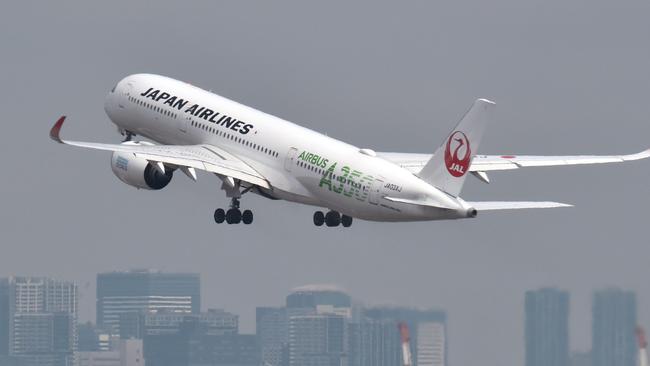International airlines struggle to fill seats into Australia
New data shows the challenge facing international airlines serving Australia with outbound planes taking off full, and inbound flights half empty.

Business
Don't miss out on the headlines from Business. Followed categories will be added to My News.
A vast discrepancy between inbound and outbound passenger loads on international flights is providing little incentive for airlines to increase capacity into Australia.
Bureau of Infrastructure, Transport and Regional Economics’ data for December revealed more than one in five seats was empty on flights heading into Australia, compared to fewer than one in 10 on outbound services.
Some carriers such as Malaysia’s Malindo Air and Philippine Airlines were half empty heading into Australia with load factors of 45.3 and 52 per cent respectively, and almost full in the other direction (94.5 and 91.1 per cent).
Similarly Garuda Indonesia flights averaged loads of almost 98 per cent out of Australia and just 63.7 per cent on the return leg, while Japan Airlines filled 96 per cent of seats heading to Tokyo, and 65 per cent on the way back.
Qantas, Jetstar and Virgin Australia also experienced a significant discrepancy particularly on routes to and from Japan, the US, UK and New Zealand.
Australian Tourism Export Council managing director Peter Shelley said a year into open borders, the fact was inbound visitor numbers remained well down on 2019 figures.
“Members are telling us a full recovery is still at least 12 to 18-months away,” Mr Shelley said.
“The federal budget needs to support our industry to recover and apply all possible efforts to ensure a return to pre-pandemic international visitor numbers and spend.”

Among the measures ATEC wants to see is a budget boost for Tourism Australia, the introduction of a family visa category, and the freezing of any taxes and charges on international visitors, such as the $60 passenger movement charge (PMC).
“The PMC is yet another disincentive for international visitors to travel to Australia at a time when we need to remove any impediment which may cause the intending traveller to choose an alternative destination,” Mr Shelley said.
More air capacity is also needed with the number of airline seats on offer heading to Australia still well under pre-Covid levels at 77 per cent.
That is expected to improve to 86 per cent next month and 89 per cent by September.
“Airline capacity has been slow to rebuild for many reasons,” Mr Shelley said.
“We are now starting to see it grow but it’s growing at a careful rate and we look forward to that escalating because more seats equals a reduction in price which equals a greater propensity to travel in both ways.”
Tourism Australia managing director Phillipa Harrison said as aviation capacity continued to grow and drive “competitive pricing”, international arrivals would “trend in the right direction”.
“The latest international arrivals figures show for the month of February, we are back to 65 per cent compared to the same month in 2019,” Ms Harrison said.
“Importantly in recent months we are starting to see more travellers visit Australia for a holiday instead of visiting friends and relatives, which is what the tourism industry has been waiting for.”
Tourism Australia’s major international marketing campaign Come and Say G’Day was launched six-months ago in key markets, and on Monday the Australian Tourism Exchange opened on the Gold Coast, showcasing world class tourist offerings, she added.
More Coverage
Originally published as International airlines struggle to fill seats into Australia





